“What omnichannel really means: hearing the customer wherever they are and making them feel heard, valued, and understood.”
That statement comes from Qualtrics’ explanation of omnichannel experience design.
The very human needs of feeling one is heard, is valued, and is understood, underpin the rasion d’etre of omnichannel marketing. And these very values are those that underpin the trust between patients and providers and the large healthcare ecosystem.
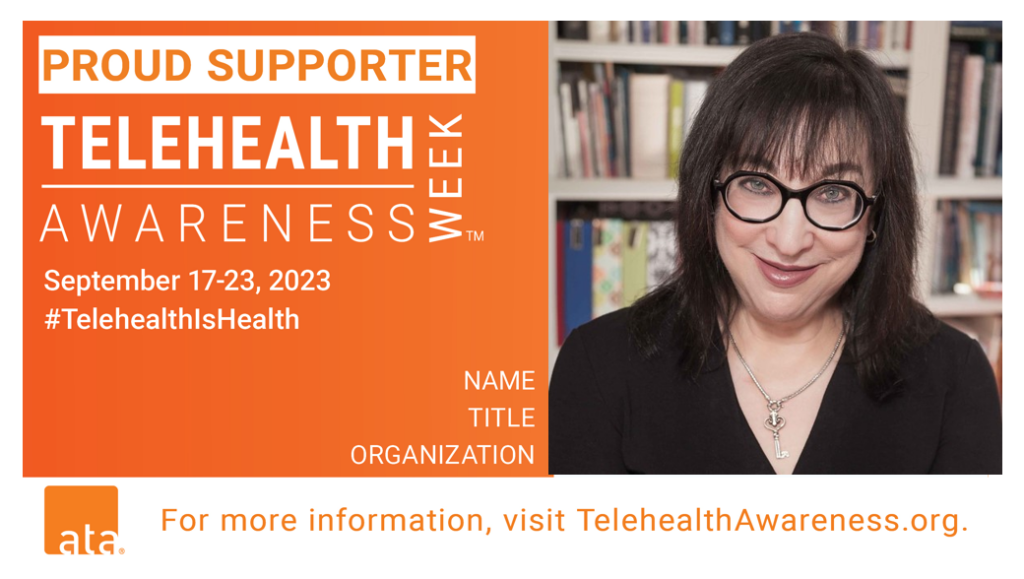
It’s Telehealth Awareness Week, led by the ATA. I celebrate and support the effort; this Health Populi post explains the Association’s mantra that Telehealth is Health, and that telehealth is firmly embedded into healthcare’s omnichannel imperative.
So why omnichannel healthcare, and why now?
Let’s put the answer into supply and demand terms.
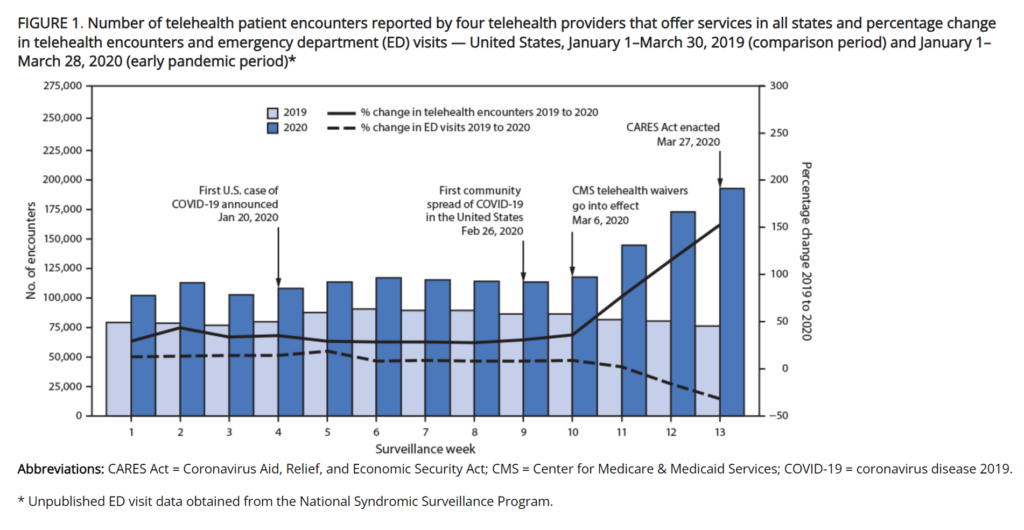
On the supply side, we witnessed a hockey stick inflection point in the growth of virtual health care services from the start of the pandemic in early 2020. Hospitals, clinics and physician offices all pivoted, quickly, to provide care at a distance. Health care providers across the continuum of care offered services from chronic to specialty care, along with investing in platforms and so-called digital front doors to enable patients to virtually “enter” their local or regional health system or doctor’s practice.
The retail pharmacy, including that co-located in the grocery store, was classified an essential business that remained open for operations and visits by patients and caregivers — further consolidating the pharmacy’s role in health consumers’ lives and another physical front-door for health care.
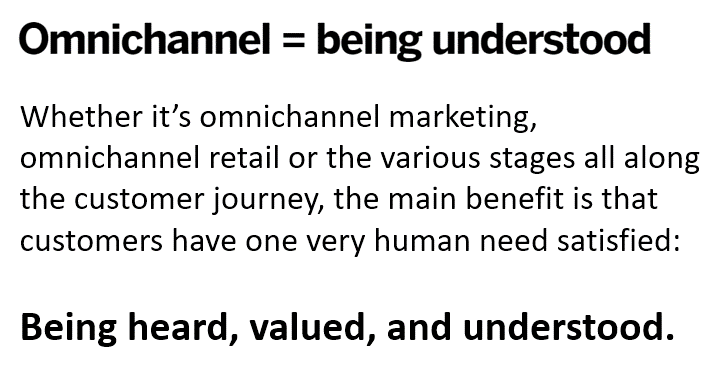
Enter the era of medical distancing, a cousin to the physical distancing health citizens collectively experienced — that is, staying physically away from brick-and-mortar medical encounters.
As a result, patients and families across ages, stages of medical conditions, races/ethnicities, and geographies experienced telehealth for the first time.
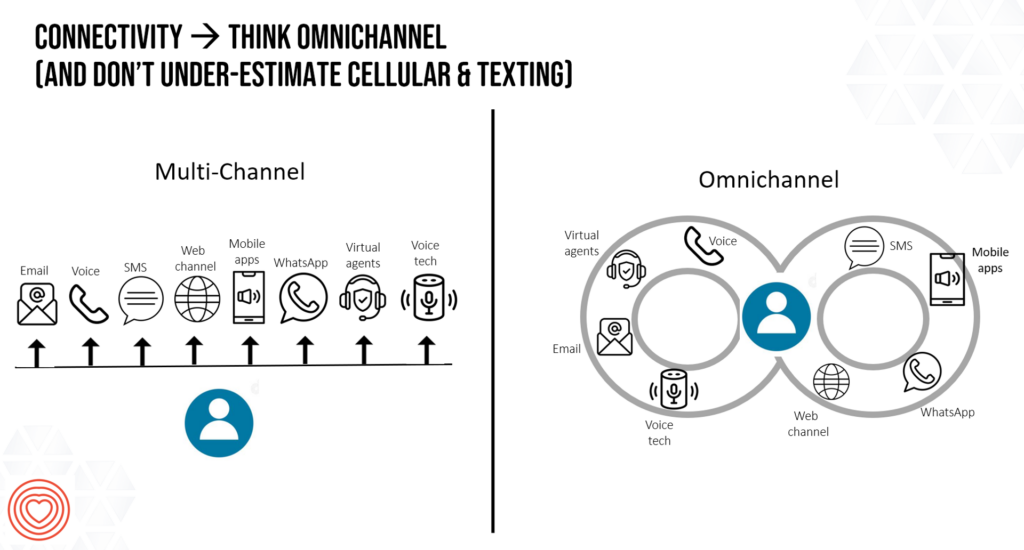
And those people, patients, families, caregivers, health citizens all, were growing more DIY — do-it-yourself — muscles in the pandemic stay-at-home era. From work to learning, faith practice and fitness, people took on more life- and health-flows from home, and cobbled together care plans for their homes (think: Clorox, Lysol, Purell, and anti-bacterial wipes), their nutrition (think: the pandemic pantries full of tinned fish, canned goods, and sourdough bread starter), and to be sure: their health.
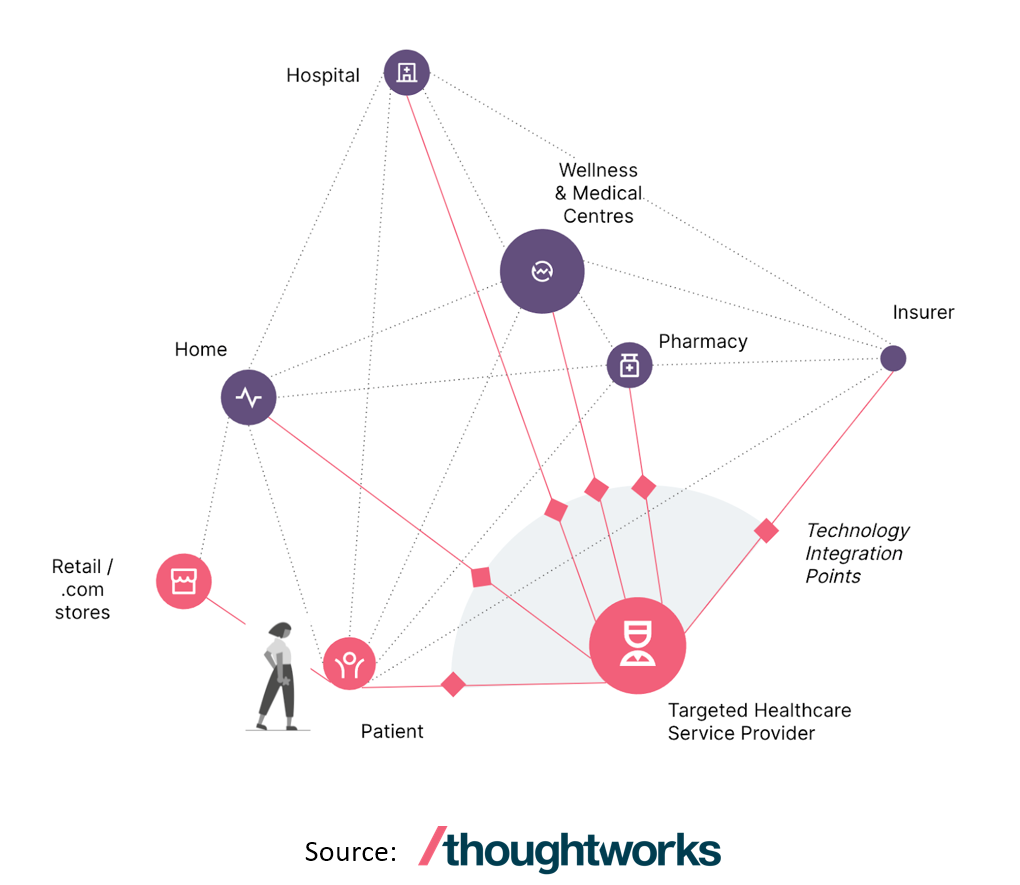
In their thoughtful review of service design principles for omnichannel health care, the team at Thoughtworks (headquartered in Australia) developed the graphic shown here. We see the patient facing various health care touchpoints — including the hospital, wellness and medical centres, insurers, pharmacies, providers, retail health sites (both virtual and brick-and-mortar), and the home.
Telehealth, in its many flavors and across platforms, enables omnichannel care — meeting the patient where she is, how she wants to be met, and when.
That requires hearing her, valuing her, understanding her.
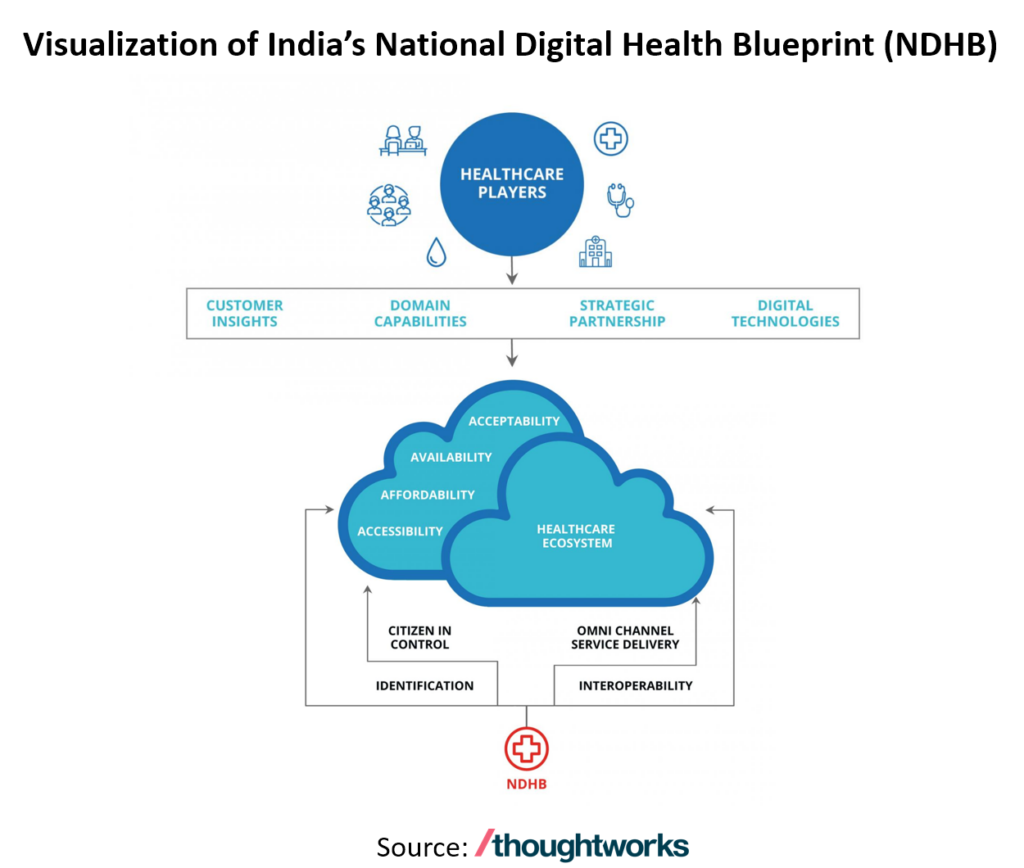
Health Populi’s Hot Points: Here is Thoughtworks’ visualization of India’s National Digital Health Blueprint conceived to the nation’s digital transformation for the health service. Note in the cloud configuration we find omni channel service delivery, interoperability, identification, and the citizen in control.
Let’s repeat that last element: “the citizen in control.”
For health, the issue of “techquity,” health equity coupled with technology access, is key to ensuring full health citizenship. Adopting and committing to equity-by-design and privacy-by-design principles must be part of the growing omnichannel health care promise to avoid exacerbating existing health disparities and biases.
We come full circle to Qualtrics’ rationale for omnichannel: the consumer-person with the basic human needs to be heard, to be valued, to be understood.
This is the promise of omnichannel health care, which has the potential to expand access, bolster health equity, engage people in effective self-care, and ultimately, to support peoples’ health citizenship.
Remember that Telehealth Is Health this Telehealth Awareness Week for 2023….and ongoing.




 I'm in amazing company here with other #digitalhealth innovators, thinkers and doers. Thank you to Cristian Cortez Fernandez and Zallud for this recognition; I'm grateful.
I'm in amazing company here with other #digitalhealth innovators, thinkers and doers. Thank you to Cristian Cortez Fernandez and Zallud for this recognition; I'm grateful. Jane was named as a member of the AHIP 2024 Advisory Board, joining some valued colleagues to prepare for the challenges and opportunities facing health plans, systems, and other industry stakeholders.
Jane was named as a member of the AHIP 2024 Advisory Board, joining some valued colleagues to prepare for the challenges and opportunities facing health plans, systems, and other industry stakeholders.  Join Jane at AHIP's annual meeting in Las Vegas: I'll be speaking, moderating a panel, and providing thought leadership on health consumers and bolstering equity, empowerment, and self-care.
Join Jane at AHIP's annual meeting in Las Vegas: I'll be speaking, moderating a panel, and providing thought leadership on health consumers and bolstering equity, empowerment, and self-care.